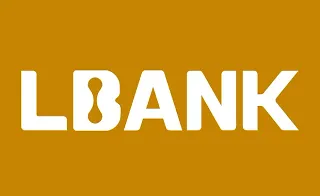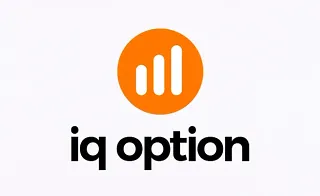Swing Low occurs when the price declines and reverses upward at a specific point, forming a new low.
These points appear across various timeframes and markets, making them useful in analyzing market trends in technical analysis and the ICT trading style.
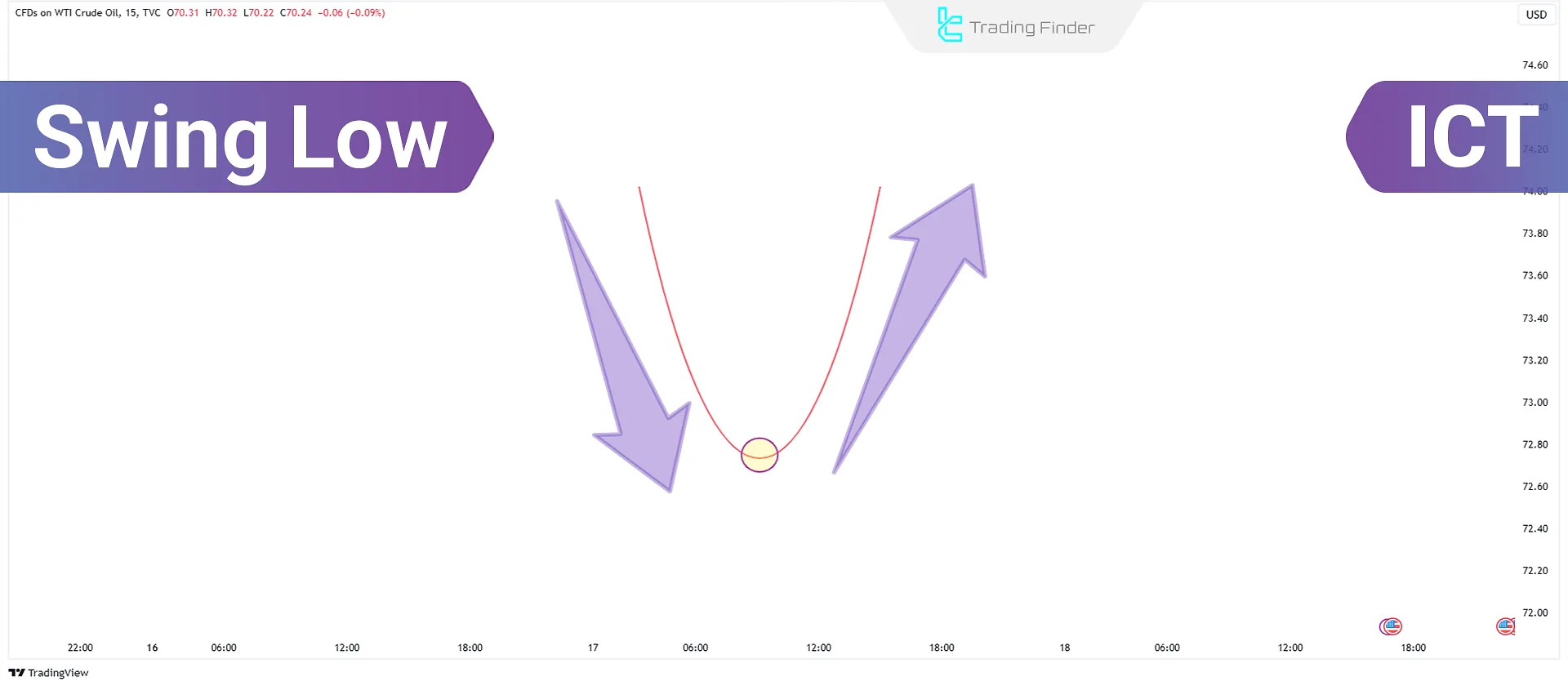
The counterpart to this strategy is Swing High, which forms during the creation of new highs.
Swing Low Structure
The Swing Low structure consists of three candles:
- The second candle is in the middle and has a lower price than the first and third candles.
- The first and third candles on either side have higher lows than the second candle.
This pattern resembles a "V" shape, where the second candle marks the lowest point of the pattern. At this point, the price begins its upward movement.
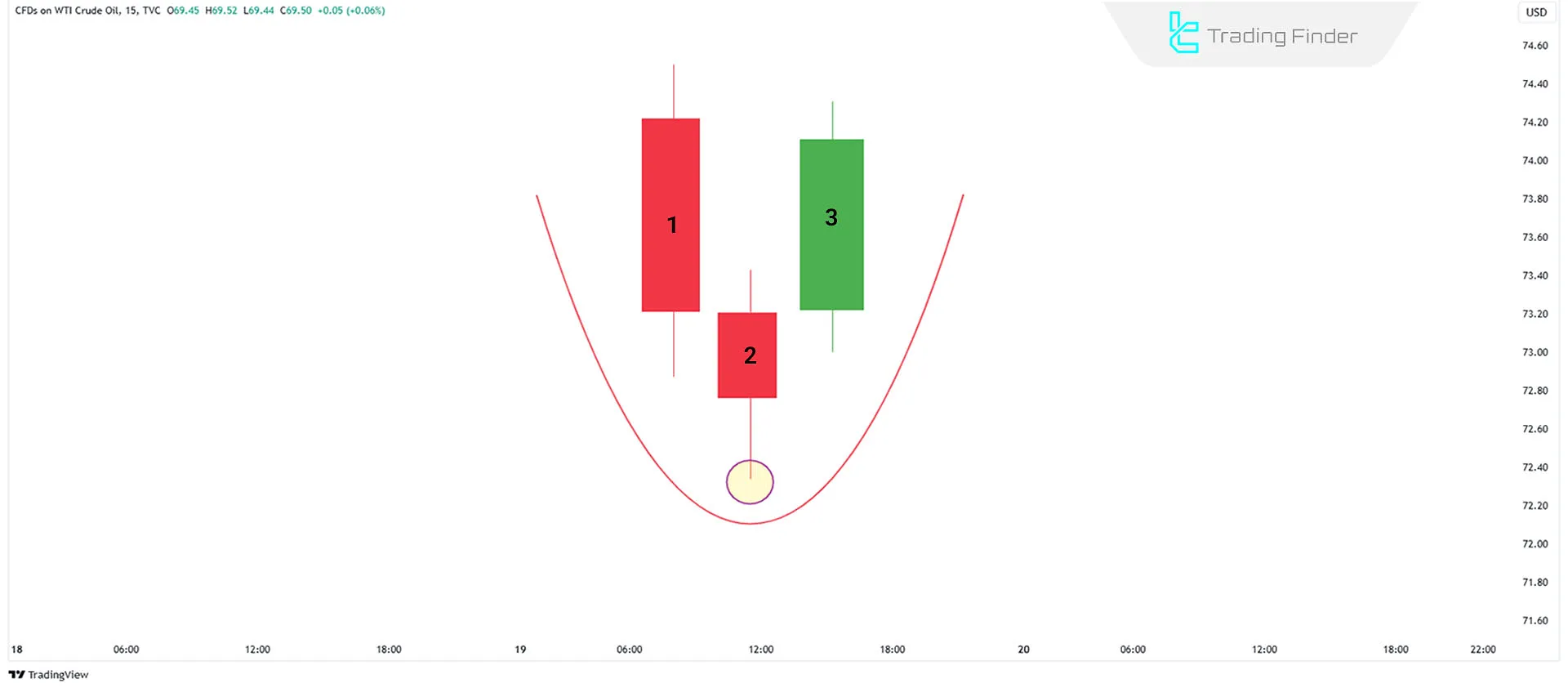
How to Identify Swing Low?
Follow these steps to identify this pattern:
- Locate the lowest low of a candlestick (the lowest point on the chart)
- Check the low of the left candle to ensure it is higher than the selected low
- Check the low of the right candle to ensure it is also higher than the selected low
If the lows of the left and right candles are higher than the middle candle, it is identified as an ICT Swing Low.
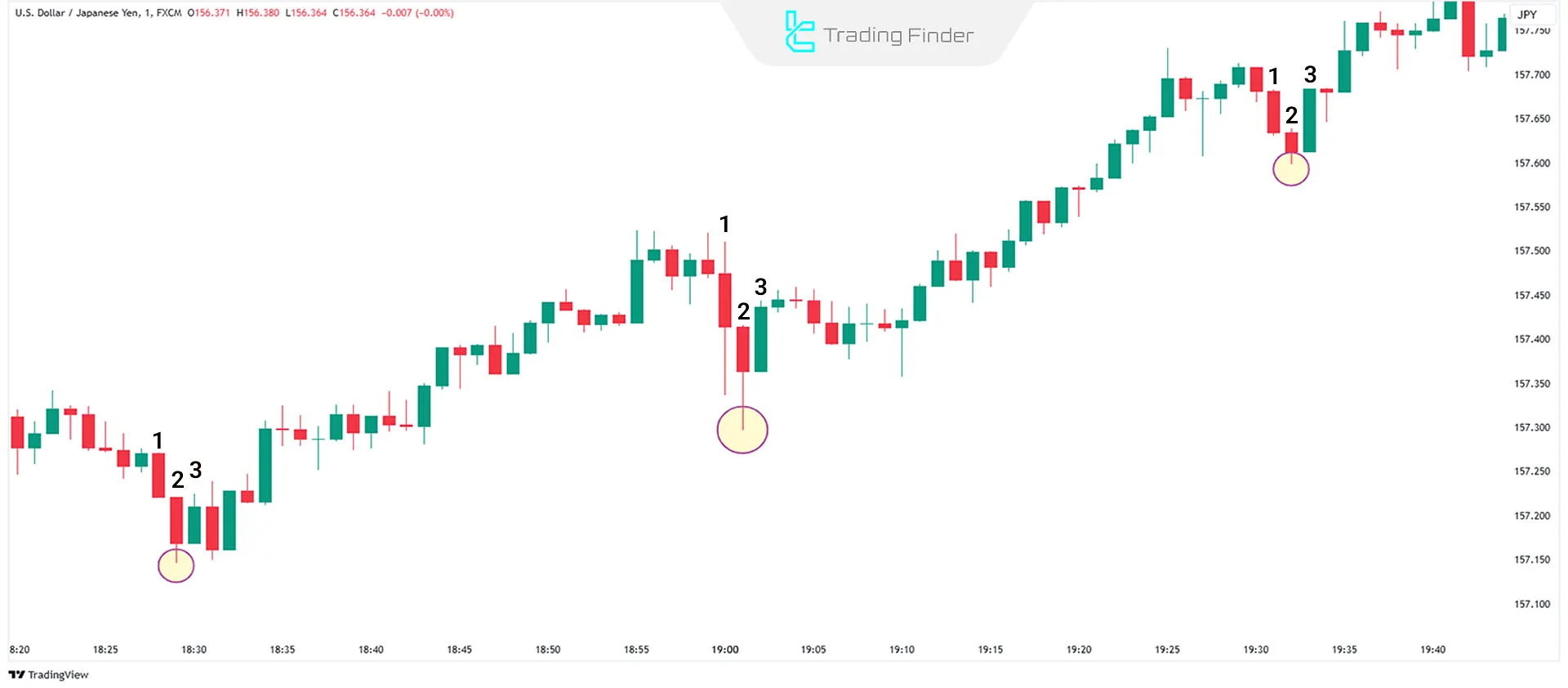
How to Trade with Swing Low
To trade with this ICT strategy, follow these four steps:
#1 Identify Swing Low on the Chart
Locate a point where the market has reached its lowest value and begun an upward move. This pattern typically appears in market support areas.
#2 Uptrend and Resistance Breakout
In an uptrend, after this pattern forms and a resistance is broken, a buy signal is generated.
#3 Set a Stop Loss
Place the stop loss just below this pattern to limit losses in case of unexpected price reversals.
#4 Set a Take Profit
Place the Take Profit near the next resistance level to capitalize on the upward price movement.
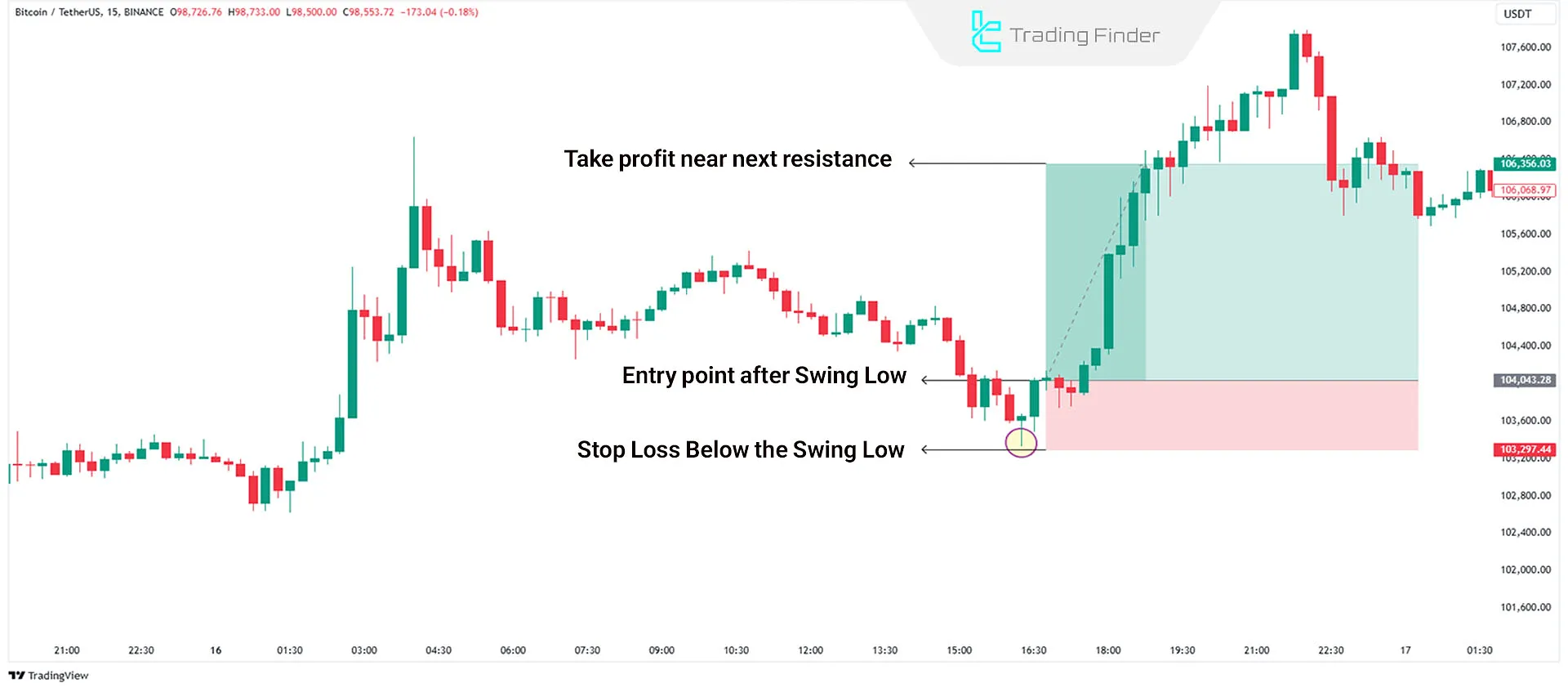
What are the Applications of Swing Low?
Swing Low is an essential tool for analyzing market trends and their strength. ICT Swing Low applications:
- Formation of this pattern at higher levels indicates an uptrend
- Conversely, lower Swing Lows indicate a downtrend
Additionally, the distance between these patterns provides insights into the intensity and strength of the market trend.
In many cases, this pattern acts as a critical point reflecting changes in the direction or strength of price movements.
Where Does ICT Swing Low Form?
This pattern in ICT trading style typically form in market support zones, where buying pressure prevents further price decline:
- In a downtrend, this pattern is followed by a short retracement
- In an uptrend, this pattern leads to continued upward movement and higher price levels
Conclusion
Swing Low is a simple yet powerful concept in technical analysis that highlights reversal or continuation points in trends.
By analyzing price ICT Swing Lows, traders can identify ideal entry points for trades.

